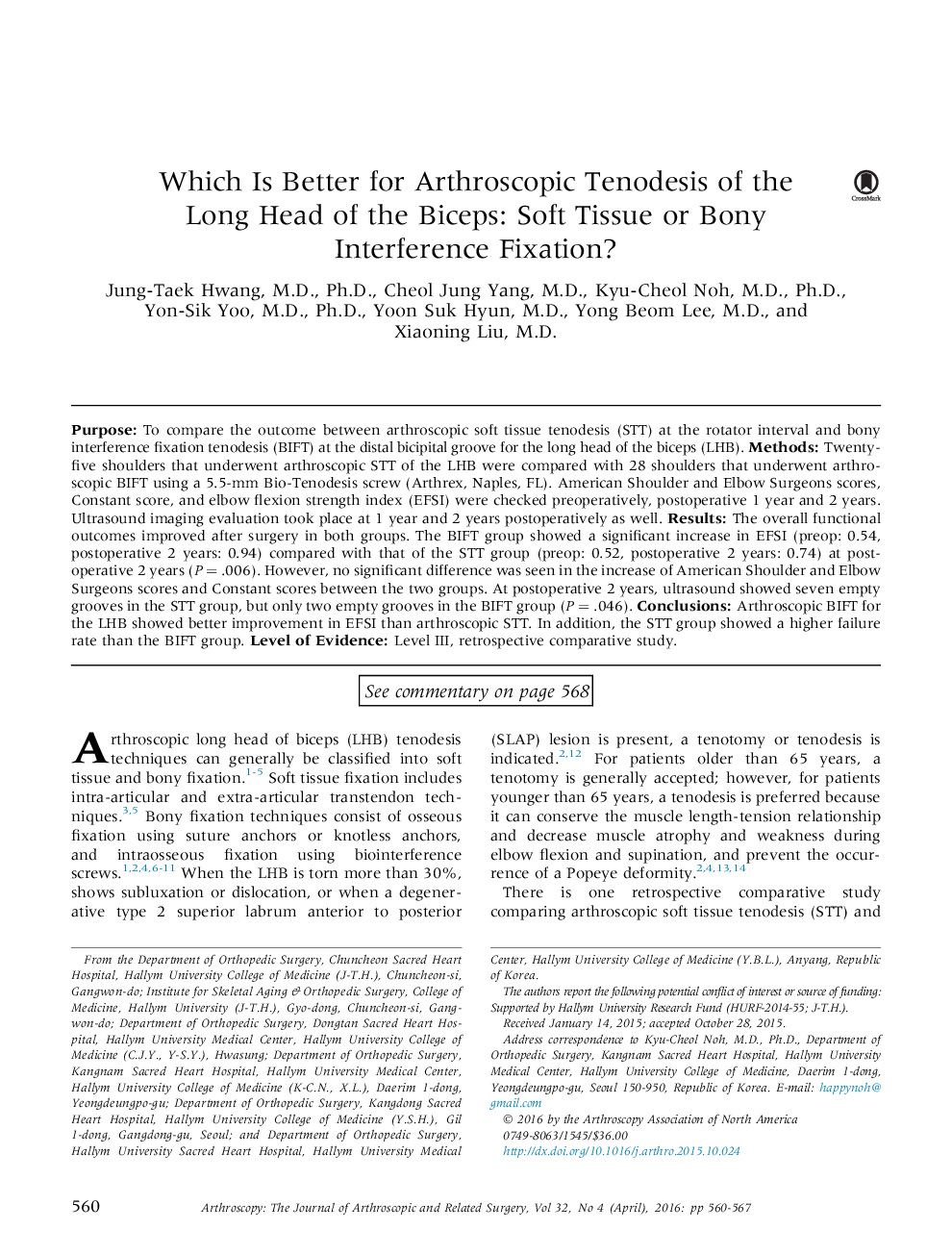| Article ID | Journal | Published Year | Pages | File Type |
|---|---|---|---|---|
| 4042160 | Arthroscopy: The Journal of Arthroscopic & Related Surgery | 2016 | 8 Pages |
PurposeTo compare the outcome between arthroscopic soft tissue tenodesis (STT) at the rotator interval and bony interference fixation tenodesis (BIFT) at the distal bicipital groove for the long head of the biceps (LHB).MethodsTwenty-five shoulders that underwent arthroscopic STT of the LHB were compared with 28 shoulders that underwent arthroscopic BIFT using a 5.5-mm Bio-Tenodesis screw (Arthrex, Naples, FL). American Shoulder and Elbow Surgeons scores, Constant score, and elbow flexion strength index (EFSI) were checked preoperatively, postoperative 1 year and 2 years. Ultrasound imaging evaluation took place at 1 year and 2 years postoperatively as well.ResultsThe overall functional outcomes improved after surgery in both groups. The BIFT group showed a significant increase in EFSI (preop: 0.54, postoperative 2 years: 0.94) compared with that of the STT group (preop: 0.52, postoperative 2 years: 0.74) at postoperative 2 years (P = .006). However, no significant difference was seen in the increase of American Shoulder and Elbow Surgeons scores and Constant scores between the two groups. At postoperative 2 years, ultrasound showed seven empty grooves in the STT group, but only two empty grooves in the BIFT group (P = .046).ConclusionsArthroscopic BIFT for the LHB showed better improvement in EFSI than arthroscopic STT. In addition, the STT group showed a higher failure rate than the BIFT group.Level of EvidenceLevel III, retrospective comparative study.
